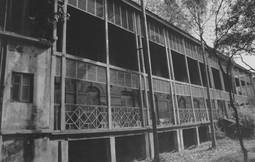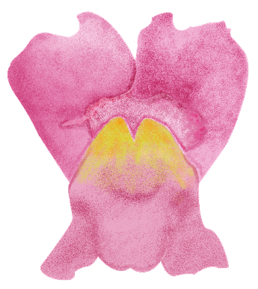|
My research dissects the origin of the gene network involved in flower symmetry at the following macroevolutionary scales.
|
2011 PhD rotation project on “Homology Modeling of Five Olfactory receptors From Humans, Mice and Worms.” Supervisor: Dr. R. Sowdhamini. I computationally modelled the putative 3-D structures of these olfactory receptors using bovine rhodopsin as a template. Predicting structure of these transmembrane proteins is challenging given their low sequence identity with the template.
2011 PhD rotation project on “Historical Population Expansion in Two Shola Birds.” Supervisor: Dr. U. Ramakrishnan. I examined the past demographic changes in two bird species from the patchy grassland forests or Sholas of the Western Ghats mountains. I employed Bayesian Skyline Plot and Mismatch Analysis to understand the influence of palaeo-climate on this demographic change.
2010–2011 M.Sc. review paper on “Cellularization of Nuclear Endosperms: Patterns of Variation and Evolution.” Supervisor: Dr. R. Geeta. I investigated the possible developmental basis to an apparent constraint to the evolution of cellular endosperm from nuclear endosperm, and the constraints on evolution of nuclear endosperm into helobial endosperm. I found suggestive evidence that abnormalities resulting from early cellularization of the endosperm on embryo development may impose developmental constraints on nuclear to cellular endosperm evolution. Nuclear to helobial evolution is rare possibly because when there is selective advantage in favour of helobial-type endosperms, nuclear endosperms can evolve to simulate the helobial condition.
2011 PhD rotation project on “Historical Population Expansion in Two Shola Birds.” Supervisor: Dr. U. Ramakrishnan. I examined the past demographic changes in two bird species from the patchy grassland forests or Sholas of the Western Ghats mountains. I employed Bayesian Skyline Plot and Mismatch Analysis to understand the influence of palaeo-climate on this demographic change.
2010–2011 M.Sc. review paper on “Cellularization of Nuclear Endosperms: Patterns of Variation and Evolution.” Supervisor: Dr. R. Geeta. I investigated the possible developmental basis to an apparent constraint to the evolution of cellular endosperm from nuclear endosperm, and the constraints on evolution of nuclear endosperm into helobial endosperm. I found suggestive evidence that abnormalities resulting from early cellularization of the endosperm on embryo development may impose developmental constraints on nuclear to cellular endosperm evolution. Nuclear to helobial evolution is rare possibly because when there is selective advantage in favour of helobial-type endosperms, nuclear endosperms can evolve to simulate the helobial condition.
I am interested in how botany developed as a discipline and how it has influenced culture, politics, cuisine, and literature. I collect data from books, advertisements, scientific papers, administrative documents, etc., and identify patterns that tell a story.
2015–2016 Calcutta Botanical Garden and making of the modern world. This research evaluates how a botanical garden established in British India influenced the development of modern science, scientific art, food habits, politics, social conventions, and religion. I based my research on memoirs, travelogues, government reports, official communic–ations, and press reports from in 18th-20th century. Presented at the Botany Conference, Savannah, GA, 2016, and was awarded Emanuel D. Rudolph Award for best historical presentation. Abstract can be found here.
2015–2016 Calcutta Botanical Garden and making of the modern world. This research evaluates how a botanical garden established in British India influenced the development of modern science, scientific art, food habits, politics, social conventions, and religion. I based my research on memoirs, travelogues, government reports, official communic–ations, and press reports from in 18th-20th century. Presented at the Botany Conference, Savannah, GA, 2016, and was awarded Emanuel D. Rudolph Award for best historical presentation. Abstract can be found here.

Old herbarium building, Calcutta Botanical Garden.

